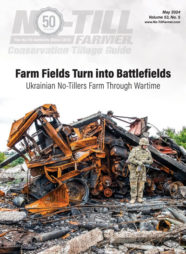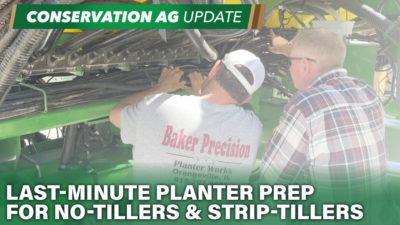Source: Michigan State University Extension
Most growers are reporting very good winter survival of the 2015 wheat crop. Now, in just the next few weeks, most management products will be applied to the Michigan wheat crop. The following are comments that may serve as reminders from Michigan State University Extension.
Herbicides
Some fields require a post-emergence herbicide to help keep weeds in check. Weed control recommendations for field crops can be found in the MSU Weed Control Guide (pages 106-113 pertain to wheat).
The use of 2,4-D is still an option in Michigan. It's inexpensive and, if used with caution, may be a reasonable choice for several common summer annual broadleaf weeds (see page 105 in the guide for a ranking of effectiveness on selected weeds).
Perhaps the most important reminder relative to using 2,4-D is that it must be applied to wheat when the crop is fully tillered and before first joint (when the first node is visible).
Another precautionary note is that some herbicides may be more likely than others to cause crop injury when temperatures dip below 40 or 50 F. Herbicides that may cause more injury under low temperatures include Affinity Broadspec, Harmony Extra, Buctril and Starane. Precautionary notes can be found on the product label.
Fungicides
There are numerous effective fungicides for combatting leaf and head diseases of wheat. Usually, the most effective use is when Caramba or Prosaro is applied a few days after the wheat heads are completely exposed. These products and this timing provide that best practice for minimizing the risk to both leaf diseases and Fusarium head scab.
Growers electing to also address early season diseases have several products from which to choose. A table listing recommended fungicides, “Fungicide Efficacy for Control of Wheat Diseases” is available.
Plant Growth Regulators
A relatively new product available to growers is Palisade, which can reduce the risk of plant lodging. Growers interested in trying the product should select fields that were planted relatively early last fall, and where the crop will receive both fungicide protection and a relatively high rate of fertilizer nitrogen (N).
The use of Palisade may also be considered where there is a serious risk of plant lodging due to the unpredictable availability of N from manure, high organic matter soils or an error in fertilizer application.
Crunch the Numbers
The use and selection of crop protection products has become more difficult with weakening commodity prices. That is, growers will need to push a sharp pencil to decide which inputs are necessary (or at least prudent) to protect the profitability of their wheat enterprise. This depends on many different circumstances, many of which are specific to individual farm operations.






Post a comment
Report Abusive Comment